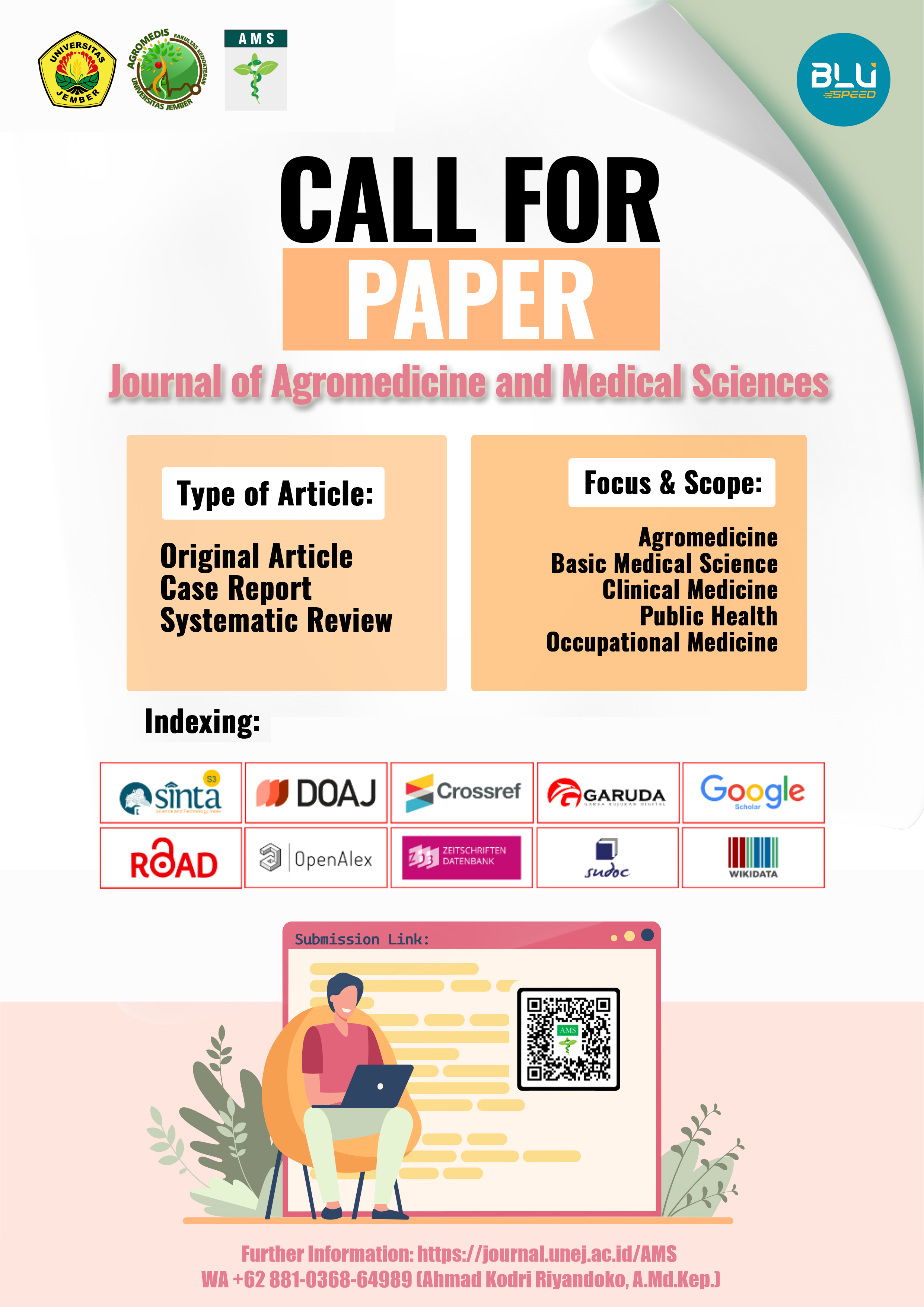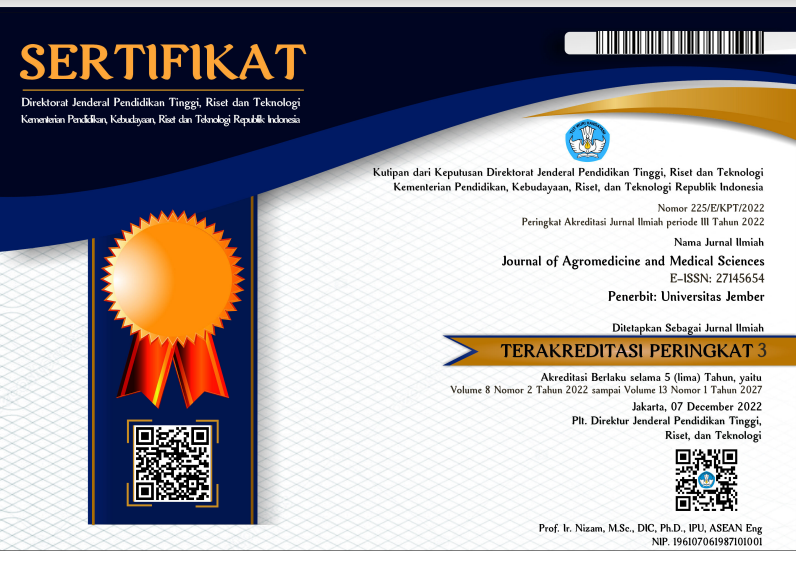Clinical Improvement in a Patient with Atopic Dermatitis Coexisting with Seborrheic Dermatitis: A Case Report
DOI:
https://doi.org/10.19184/ams.v10i3.4758Keywords:
atopic dermatitis, seborrhoeic dermatitisAbstract
Atopic dermatitis (AD) is a common chronic inflammatory skin disease affecting individuals of all ages and races. The etiology of AD is multifactorial, involving genetic, immunological, and environmental interactions. Diagnosis is based on patient history, clinical manifestations, and the Hanifin-Rajka criteria, as well as assessments using the Eczema Area and Severity Index (EASI) and SCORing Atopic Dermatitis (SCORAD). This article reports a case of AD accompanied by seborrheic dermatitis. A 15-year-old female presented with itching on the face, accompanied by thick, yellowish scaling on the left side of her face for the past three weeks. Symptoms began with red spots that progressed to pus-filled vesicles and spread to her hands. The patient also experienced yellow, scaly dandruff on her scalp. A history of shrimp allergy and dry skin upon sweating was noted, with poor personal hygiene potentially contributing to the clinical manifestations. The diagnosis of AD with seborrheic dermatitis as a comorbidity was established based on the Hanifin-Rajka criteria (3 major and 3 minor), SCORAD (pre: 67.2; post: 24.3), and EASI (pre: 12.4; post: 5.6), with a negative white dermatographism. Initial treatment included NaCl compresses, oral dexamethasone, and oral cetirizine, which showed improvement after 10 days. Upon follow-up, the patient was prescribed a compounded cream and ketoconazole shampoo, further alleviating symptoms. This management demonstrated positive outcomes, indicating a good response to therapy.





















